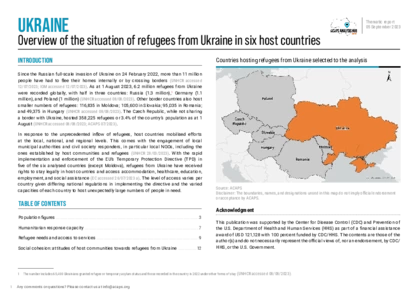After the onset of the Russia-Ukraine conflict in 2014, in February 2022, Russia launched a full-scale invasion from Russian and Belarusian territory into northern, eastern, and southern Ukraine. This has resulted in mass displacement within Ukraine and abroad, mostly to the EU.
As at early 2024, over 85,000 refugees from Ukraine remained in Romania. Since March 2022, more than 155,000 people have applied for temporary protection (TP) status.
Language barriers, lack of information, and administrative constraints are the main restrictions for refugees in Romania trying to access services and receive social protection benefits, such as education. TP status documentation also does not include the residential address, leading to further delays and challenges in accessing TP benefits, such as healthcare.
For 2024, the main needs identified in the Regional Response Plan for Romania are protection, basic needs such as accommodation, cash assistance, and livelihoods, followed by child protection and education. Other needs are related to protection, specifically to gender-based violence, as well as health and nutrition.
(CFR accessed 23/11/2023, UNHCR accessed 29/01/2024, UNHCR 15/01/2024, AIDA 24/05/2023)
After the onset of the Russia-Ukraine conflict in 2014, in February 2022, Russia launched a full-scale invasion from Russian and Belarusian territory into northern, eastern, and southern Ukraine. This has resulted in mass displacement within Ukraine and abroad, mostly to the EU.
As at early 2024, over 85,000 refugees from Ukraine remained in Romania. Since March 2022, more than 155,000 people have applied for temporary protection (TP) status.
Language barriers, lack of information, and administrative constraints are the main restrictions for refugees in Romania trying to access services and receive social protection benefits, such as education. TP status documentation also does not include the residential address, leading to further delays and challenges in accessing TP benefits, such as healthcare.
For 2024, the main needs identified in the Regional Response Plan for Romania are protection, basic needs such as accommodation, cash assistance, and livelihoods, followed by child protection and education. Other needs are related to protection, specifically to gender-based violence, as well as health and nutrition.
(CFR accessed 23/11/2023, UNHCR accessed 29/01/2024, UNHCR 15/01/2024, AIDA 24/05/2023)


